Martin Edwards's Blog, page 178
June 26, 2015
Forgotten Book - Eleven
Continuing my exploration of the work of Patricia Highsmith, I recently re-read Eleven, which I came across originally in the Seventies - it was published in 1970, and is a collection of eleven short stories, with a foreword by Graham Greene. In comparison to her better known work, it's a book that I think does count as a Forgotten Book, but it shouldn't be. I admired it when I first read it, and I was even more impressed the second time around.
Greene says, rightly I think, that Highsmith is "a poet of apprehension rather than fear" - in fact he relates this specifically to her novel The Tremor of Forgery, which he greatly admired, and which I discussed a few Fridays ago. He praises her short stories warmly, pointing out - which I hadn't realised before - that some in this book were written even before her first published novel, Strangers on a Train. As he says, "we have no sense that she is learning her craft". He picks out "When the Fleet Was In at Mobile" as his favourite, and it's certainly a poignant story, as well as being as dark as the other ten in the book.
Where I might part company with Graham Greene is in his remark that readers may sometimes be able to brush her stories off more easily than her novels, because their brevity means that we haven't lived long enough with them to be totally absorbed. For me, Highsmith is at least as brilliant a short story writer as a novelist. In fact, I'm tempted to say that her gifts were even better suited to the short form. I doubt whether this is a widely shared view, but I think it's no coincidence that, as her career wore on, she struggled to come up with dazzling new ideas for novels - returning to Tom Ripley time and again, for instance, and repeating some themes of earlier books - whereas she continued to write very memorable short stories. For my taste (and judging her by high standards), some of her weaker novels drag a bit. This isn't the case with her short stories..
Certainly, Eleven is full of dazzling, haunting stories. Two feature snails, and one a terrapin, but each is unique and splendid. "The Quest for Blank Claveringi", in particular, is one of the most horrific and gripping stories you could wish to find; it really is a horror story, but it also tells us something about human nature, in Highsmith's customary subtle way. There isn't one story in the eleven that is anything less than excellent.
Greene says, rightly I think, that Highsmith is "a poet of apprehension rather than fear" - in fact he relates this specifically to her novel The Tremor of Forgery, which he greatly admired, and which I discussed a few Fridays ago. He praises her short stories warmly, pointing out - which I hadn't realised before - that some in this book were written even before her first published novel, Strangers on a Train. As he says, "we have no sense that she is learning her craft". He picks out "When the Fleet Was In at Mobile" as his favourite, and it's certainly a poignant story, as well as being as dark as the other ten in the book.
Where I might part company with Graham Greene is in his remark that readers may sometimes be able to brush her stories off more easily than her novels, because their brevity means that we haven't lived long enough with them to be totally absorbed. For me, Highsmith is at least as brilliant a short story writer as a novelist. In fact, I'm tempted to say that her gifts were even better suited to the short form. I doubt whether this is a widely shared view, but I think it's no coincidence that, as her career wore on, she struggled to come up with dazzling new ideas for novels - returning to Tom Ripley time and again, for instance, and repeating some themes of earlier books - whereas she continued to write very memorable short stories. For my taste (and judging her by high standards), some of her weaker novels drag a bit. This isn't the case with her short stories..
Certainly, Eleven is full of dazzling, haunting stories. Two feature snails, and one a terrapin, but each is unique and splendid. "The Quest for Blank Claveringi", in particular, is one of the most horrific and gripping stories you could wish to find; it really is a horror story, but it also tells us something about human nature, in Highsmith's customary subtle way. There isn't one story in the eleven that is anything less than excellent.
Published on June 26, 2015 04:36
June 24, 2015
Bodies from the Library
Not so long ago, to suggest that a group of volunteers could set up from scratch a conference about Golden Age fiction that would attract a large and near sell-out audience at one of the country's most prestigious venues would have seemed fanciful. Yet that is exactly what happened with the Bodies from the Library conference at the British Library on Saturday. And the first thing to say about the event is that Mike, John, Mark, Liz, Susan and company who worked so hard to make the dream a reality deserve the utmost praise. The event was a huge success.
I was glad to be heavily involved with the day's events. First, Jake Kerridge and I talked about what and when was the Golden Age, and later in the morning Simon Brett and I discussed the Detection Club, including its collaborative books. In the final session, all the participants talked about books they thought ripe for a reprint - I sneaked in several titles, though my ultimate choice was Raymond Postgate's Verdict of Twelve. Simon, witty as ever, suggested that I'd contrived the whole event as a grandiose launch for The Golden Age of Murder, and really it was wonderful to sign so many copies . But there was much else to celebrate.
Barry Pike, doyen of Golden Age experts, spoke about Sayers and Allingham, and it was also a great pleasure for me to meet for the first time John Cooper, another great expert, who co-authored with Barry two superb and lavishly illustrated books, Collecting Detective Fiction and Artists in Crime. Both strongly recommended. Other speakers included John Curran on Christie, Dolores Gordon-Smith on Crofts, Tony Medawar on locked room mysteries, and Len Tyler on modern day GA fiction. Along with America's Doug Greene and Marv Lachman, Barry, John and Tony have done so much for so many years to keep the flag flying for GA fiction, and the audience loved listening to them.
That wasn't all. Richard Reynolds discussed Oxbridge crime, and we also listened to a John Dickson Carr radio play. David Brawn of Harper Collins and Rob Davies of the BL discussed editing issues with GA fiction; I very much enjoy working with both David and Rob and they were the ideal choices for that particular panel.
The social side of these events is always important, and I was delighted to meet a number of people for the first time with whom I've corresponded in the past. In fact, the only snag was that there simply wasn't enough time to have much of a chat with the many interesting people who were there. One thing I can say for sure, though, is that the buzz in the Library was fantastic, and that everyone hopes the event can be held again next year.
I was glad to be heavily involved with the day's events. First, Jake Kerridge and I talked about what and when was the Golden Age, and later in the morning Simon Brett and I discussed the Detection Club, including its collaborative books. In the final session, all the participants talked about books they thought ripe for a reprint - I sneaked in several titles, though my ultimate choice was Raymond Postgate's Verdict of Twelve. Simon, witty as ever, suggested that I'd contrived the whole event as a grandiose launch for The Golden Age of Murder, and really it was wonderful to sign so many copies . But there was much else to celebrate.
Barry Pike, doyen of Golden Age experts, spoke about Sayers and Allingham, and it was also a great pleasure for me to meet for the first time John Cooper, another great expert, who co-authored with Barry two superb and lavishly illustrated books, Collecting Detective Fiction and Artists in Crime. Both strongly recommended. Other speakers included John Curran on Christie, Dolores Gordon-Smith on Crofts, Tony Medawar on locked room mysteries, and Len Tyler on modern day GA fiction. Along with America's Doug Greene and Marv Lachman, Barry, John and Tony have done so much for so many years to keep the flag flying for GA fiction, and the audience loved listening to them.
That wasn't all. Richard Reynolds discussed Oxbridge crime, and we also listened to a John Dickson Carr radio play. David Brawn of Harper Collins and Rob Davies of the BL discussed editing issues with GA fiction; I very much enjoy working with both David and Rob and they were the ideal choices for that particular panel.
The social side of these events is always important, and I was delighted to meet a number of people for the first time with whom I've corresponded in the past. In fact, the only snag was that there simply wasn't enough time to have much of a chat with the many interesting people who were there. One thing I can say for sure, though, is that the buzz in the Library was fantastic, and that everyone hopes the event can be held again next year.
Published on June 24, 2015 04:45
June 22, 2015
The Detection Club Presidency
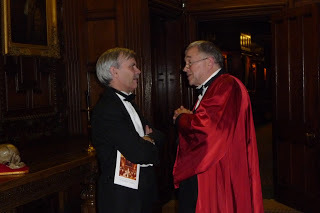
I've returned home after an exhilarating few days in London, with a number of highlights, including Saturday's superbly organised and hugely successful Bodies from the Library conference. More about that in a day or so, but today I'll focus on an item of news that I've kept under my hat for several months, but which became public knowledge over the week-end.
One of the events at the conference saw Simon Brett and I talking about the Detection Club. Simon has been President of the Club for fourteen years, and as he mentioned on Saturday, he made it clear a while ago that he was aiming to retire from office - an office which he has held with much distinction throughout that time. The plan is that he will retire at the next annual dinner of the Club, to be held in November. And the news he announced is that he will be succeeded by.... me.
To say that I am thrilled by this is an under-statement. As far as I'm concerned, in the course of an often very fortunate writing career, it really is the greatest highlight, given my undying enthusiasm for the history and heritage of the crime fiction genre, as well as for its present and its future. Back in February, when a number of members approached me with the suggestion that I become President, I was somewhat astonished as well as very flattered.
Once I had time to take it in, I was also extremely touched and grateful, and among several lovely things that have happened since the members made their decision is that the great Len Deighton, a member of the Club since 1969, generously took me out for a long and hugely enjoyable lunch in London, an occasion which I shall never forget.
Since the Club came into being in 1930, there have only been eight Presidents, one of whom was appointed as a co-President only:
G.K. Chesterton 1930-36
E. C. Bentley 1936-49
Dorothy L. Sayers 1949-57
Agatha Christie 1957-76
Lord Gorell 1957-63 (as co-President, because Christie disliked public speaking)
Julian Symons 1976-85
H.R.F. Keating 1985-2000
Simon Brett 2000 to date
When one looks at that list of very illustrious names, my pleasure is self-explanatory. Yes, you may think that quality control has slipped all of a sudden, but I couldn't possibly comment! My friends and fellow Club members have done me a great honour. Now my first aim is to try to avoid falling under a bus between now and mid-November...
(The photo shows Simon and me at a Detection Club dinner a while ago and was taken by Kate Charles the night she was initiated as a member of the Club.)
Published on June 22, 2015 01:59
June 19, 2015
Forgotten Book - The House by the River
The House by the River tends to be remembered today - if at all - as a post-war film directed by the brilliant Fritz Lang. But the film was based on a novel written thirty years earlier by A.P. Herbert, and this is today's Forgotten Book. One thing is for sure: it really does not deserve to be forgotten, since it's very well-written, and in some ways well ahead of its time.
This is a novel that is definitely not a whodunit, but a portrait of a murderer. There's a tendency these days for some fans of whodunits to lament the fact that so many crime novels focus on character and setting rather than puzzle. But it's not a new development, as this book illustrates. Herbert focuses on the effect that guilt and moral responsibility for a crime may have on different personalities, and in some ways this novel shows him as a forerunner of the likes of Patricia Highsmith.
The main protagonist is a poet called Stephen Byrne, who lives with his wife and young daughter in a house by the Thames. One night, when Mrs Byrne is out, he makes a clumsy pass at their maid, Emily. One thing leads to another, but not in a good way.Stephen strangles Emily, and has to decide whether to confess his crime, or hide it. He chooses the latter course, and enlists the help of his neighbour and friend, a dour but decent civil servant.
The pair dump poor Emily's body in the river, but inevitably it is discovered. The twist is that John, the hapless chum, rather than Stephen, becomes the prime suspect. Herbert explores their intertwined fates in a way that would, I feel, have impressed Highsmith. I don't know if she ever read this novel,but it is worthy of her. Yes, that good. The Thames, in particular, is evocatively described, but there are also some very good snapshots of the supporting cast. All in all, a book that ought to be better known. John Norris, that very well-read blogger, is a fan of this novel, and as usual, his judgment is spot on.
This is a novel that is definitely not a whodunit, but a portrait of a murderer. There's a tendency these days for some fans of whodunits to lament the fact that so many crime novels focus on character and setting rather than puzzle. But it's not a new development, as this book illustrates. Herbert focuses on the effect that guilt and moral responsibility for a crime may have on different personalities, and in some ways this novel shows him as a forerunner of the likes of Patricia Highsmith.
The main protagonist is a poet called Stephen Byrne, who lives with his wife and young daughter in a house by the Thames. One night, when Mrs Byrne is out, he makes a clumsy pass at their maid, Emily. One thing leads to another, but not in a good way.Stephen strangles Emily, and has to decide whether to confess his crime, or hide it. He chooses the latter course, and enlists the help of his neighbour and friend, a dour but decent civil servant.
The pair dump poor Emily's body in the river, but inevitably it is discovered. The twist is that John, the hapless chum, rather than Stephen, becomes the prime suspect. Herbert explores their intertwined fates in a way that would, I feel, have impressed Highsmith. I don't know if she ever read this novel,but it is worthy of her. Yes, that good. The Thames, in particular, is evocatively described, but there are also some very good snapshots of the supporting cast. All in all, a book that ought to be better known. John Norris, that very well-read blogger, is a fan of this novel, and as usual, his judgment is spot on.
Published on June 19, 2015 01:00
June 17, 2015
A Tale of Three Islands

Cumbria is a large county, and there is more to it than the Lake District. Whilst my series is set in the Lakes, I feel that it wouldn't be realistic to confine the activities of the county's cold case team to the Lakes, and therefore I'm keen to keep an eye on other locations. That, plus idle curiosity, prompted me to visit Barrow-in-Furness on the way back from Carlisle the other day, and in particular to take a look at the islands just off the Furness peninsula.
Walney Island is by far the largest of those islands, and it's linked to the docks area of Barrow by a substantial bridge. Many of the houses on the island were originally built for people who worked on the dock, but although there's an industrial (verging on post-industrial) feel to part of the area, there are also two nature reserves and some wonderful views. There's also a great pub at Biggar, The Queen's Arms, where the locals went to some trouble to give me directions to Piel Island.

You reach Piel via Roa Island, which is itself accessed by a causeway from the mainland. At the end of Piel Street, there is a huge lifeboat station, and a long jetty for the ferry to Piel. Piel was given to the people of Barrrow after the First World War, and the ferryman was none other than Steve, the King of Piel.
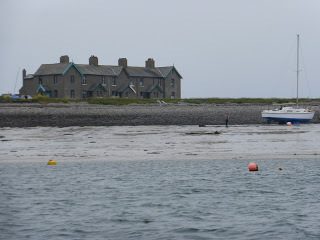

Piel has a marvellous history. The monks of Furness Abbey built what is now known as Piel Castle (not to be confused with Peel Castle on the Isle of Man) and it's in the care of English Heritage. The ruins are extremely impressive. We were stranded on the island for a couple of house, because of the tides, but this was no hardship. It's pleasant to walk around the ruins, to admire the views, and to sample the hospitality of the Ship Inn.
The King of Piel is the landlord of the Ship Inn, and his throne is on display (see below.) The story goes that if anyone sits n it, they have to buy drinks all round. It's an absolutely fascinating place, and I found the trip truly exhilarating. Steve told me that he's thinking of writing his memoirs. I bet they would be well worth reading, and I'd be in the queue to buy a copy. I was left wondering how to fit Piel Island into my next Lakes book. There has to be a way....
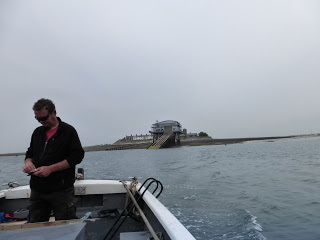
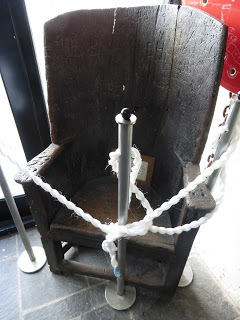

Published on June 17, 2015 00:30
June 16, 2015
Silloth and Ideas

Long-time readers of this blog will know that, when possible, I like to combine my work at crime fiction festivals and other events with some sight-seeing and research. At present, I'm in the midst of a flurry of festivals - three in nine days - but when en route for Carlisle last week, I thought I really must take advantage of the wonderful weather to have a look at the Lake District and also at a part of Cumbria that I hadn't seen before
I've wanted to take a look at Silloth for a long time. It's a proposed trip I discussed some years ago with Maxine Clarke- many blog readers will remember Maxine fondly for her Petrona blog. Maxine was a lovely person, who knew Silloth very well, and recommended me to go there. It's a little resort on the Solway coast, and it appealed to me in the way that old resorts usually do. As a bonus, you can look across the water and see the Scottish coast, not that far away. Whilst I was there, I thought back to my all too infrequent get togethers with Maxine, who died far too young. She is much missed.
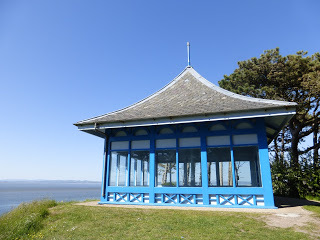
Something unexpected happened whilst I was at Silloth. I'd been playing around with an idea for a historical story, and that was in my mind when I set off up the motorway. But whilst I was wandering along the promenade, an idea came to me - unbidden - about a new mystery involving Daniel Kind. This particular puzzle strikes me as a very suitable sub-plot for the next Lake District Mystery.

All authors struggle to answer the question "where do you find your ideas?" but my experience is that ideas often come when you don't try to force them. Holidays, when the brain relaxes, are an ideal opportunity for ideas to come drifting into one's head. And the same is true of trips like my visit to Cumbria. I certainly enjoyed my first sight of Silloth, and there's every chance that the place will feature in the next Lakes book as a result..And the same is true of another place I'll talk about tomorrow....
Published on June 16, 2015 06:05
June 14, 2015
Carlisle Crime Writing Festival
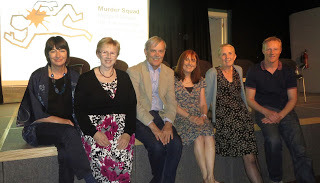
I've returned from attending the inaugural Carlisle Crime Writing Festival - a thoroughly enjoyable week-end, for all sorts of reasons. The Festival was the brainchild of Martin Daley, an author of historical crime fiction, and the Festival had the backing of Carlisle Borough Council. Now, local authorities come in for their fair share of criticism, but the first thing to say is that I believe this was a very well-organised and successful venture, the first step, perhaps, along the journey of putting Carlisle on the crime fiction map.

I do hope the festival becomes a fixture in the calendar, because the city is a terrific destination, the gateway to Scotland if one is heading north, and to the Lake District if heading south. One of the spin-off benefits of a successful festival is that local businesses benefit, and among those that certainly deserve to benefit is the local bookshop, Bookends (which also has a branch in Keswick.) the owners run a second hand bookshop, Bookcase, which has extensive and impressive stock and is also well worth a visit.

A word, too, for the Crown and Mitre Hotel, where we stayed. On Thursday evening I had a chance to catch up over dinner with Rebecca Tope, with whom I shared a platform on Friday morning, along with a newish author, Graham Smith. The connecting theme was that we all write books set in the local area, although we have contrasting approaches to writing and our books are quite different. Martin Daley hosted this session, and did so very professionally.
In the afternoon, as well as looking around the city, and visiting Bookcase, I enjoyed a panel featuring the Scottish trio Lin Anderson, Alex Gray, and Alanna Knight. Then it was time for the evening event - a rare outing together for all six members of Murder Squad. This was a fun event, ably organised by Cath Staincliffe, and it's fascinating to think that the Squad has been together, with only limited changes of personnel, for close on sixteen years. And we are all still speaking to each other...in fact there was much convivial conversation over dinner afterwards.
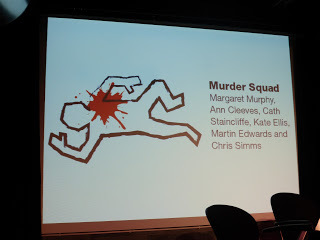
All in all, a great event, and special thanks go to Martin for all his hard work, and his team. Getting a festival like this off the ground is far from easy, but he did great job. As for me, I had a fantastic trip, with excursions to other parts of Cumbria before and after the festival. And I even met a real life King. More about this shortly! .
Published on June 14, 2015 09:42
June 11, 2015
Forgotten Book - Sergeant Cluff Stands Firm
Does anybody remember Cluff? This was a detective show on the BBC in the mid-Sixties. I have a vague recollection, but no more, of seeing it when I was young. Apparently the TV series sprang from a pilot episode of that wonderful anthology series Detective - but my memories of Detective really go back to the later shows, screened right at the end of the Sixties. Anyway, I've just read the first book featuring Sergeant Cluff, who was played on TV by Leslie Sands. And Sergeant Cluff Stands Firm is definitely a Forgotten Book that deserves to be read today.
The setting is Gunnarshaw, which is a thinly disguised version of Skipton. The author of the Cluff books,Gil North - whose real name was Geoffrey Horne - was born and grew up in Skipton, and spent his later years there after a long career in the British Colonial Service. Cluff is gruff and bluff, a typical taciturn Yorkshireman, but beneath the stubborn and uncompromising exterior lurks a man with genuine compassion, and a burning desire to see justice done.
In this story, which appeared in 1960, and was the first of eleven Cluff books, Cluff is determined to do justice on behalf of a middle-aged woman who is found gassed in her own bedroom. The obvious conclusion is that she has committed suicide, but Cluff distrusts obvious conclusions, and he determines to find out what has led Amy Wright to such a dreadful end.
The setting is strong, and so is the characterisation. Cluff is a sort of Geoffrey Boycott of detection - cussed and sometimes irritating, but gifted, and reliable in a crisis. There are strong hints of the Maigret books, and although Gil North wasn't anything like as prolific as Simenon, and had a literary style that was, perhaps, an acquired taste (Harry Keating, for instance, wasn't too keen on it) he could certainly write well. This is a short book, but it packs a punch.
The setting is Gunnarshaw, which is a thinly disguised version of Skipton. The author of the Cluff books,Gil North - whose real name was Geoffrey Horne - was born and grew up in Skipton, and spent his later years there after a long career in the British Colonial Service. Cluff is gruff and bluff, a typical taciturn Yorkshireman, but beneath the stubborn and uncompromising exterior lurks a man with genuine compassion, and a burning desire to see justice done.
In this story, which appeared in 1960, and was the first of eleven Cluff books, Cluff is determined to do justice on behalf of a middle-aged woman who is found gassed in her own bedroom. The obvious conclusion is that she has committed suicide, but Cluff distrusts obvious conclusions, and he determines to find out what has led Amy Wright to such a dreadful end.
The setting is strong, and so is the characterisation. Cluff is a sort of Geoffrey Boycott of detection - cussed and sometimes irritating, but gifted, and reliable in a crisis. There are strong hints of the Maigret books, and although Gil North wasn't anything like as prolific as Simenon, and had a literary style that was, perhaps, an acquired taste (Harry Keating, for instance, wasn't too keen on it) he could certainly write well. This is a short book, but it packs a punch.
Published on June 11, 2015 23:30
June 10, 2015
End of the Game - film review
End of the Game is a 1975 film that is known under various names, including the original German title, Der Richter and sein Henker (The Judge and his Hangman.) It's based on a book published 25 years earlier, written by the Swiss playwright and novelist Friedrich Durrenmatt. When I was studying for my A Levels and S Levels in German, at the tender age of 17, I read Durrenmatt's famous play, The Visit, which I thought was superb. This prompted me to seek out his other work, including Der Richter und sein Henker, a detective story. I really enjoyed it - and not just because it was short and pretty easy to read in the original German!
I did not, however, find out until recently that the book had been filmed. Thanks to Sergio's excellent blog, Tipping My Fedora, I learned about the DVD's existence, and made sure I acquired a copy. I'm glad I did. The cast is excellent. Donald Sutherland has a tough part, playing a cop who is found shot dead in his car right at the start of the story. Jon Voight plays the keen young detective Tschanz, the breathtaking Jacqueline Bisset is the dead man's girlfriend, and Robert Shaw is the nasty criminal whom the lead detective, the cancer-stricken Barlach, is trying to pay back for past misdemeanours,
One very pleasing feature of the film is that Durrenmatt himself makes an appearance - as a writer called Friedrich. We encounter him, musing over a chess game. When asked what he is doing, he says, "I am playing myself." The double meaning is a typical Durrenmatt joke - his specialism was not detection, but comedy, usually with an ironic edge.
This is a stylised film, by no means wholly realistic, but none the worse for that. The mystery element is not at all bad - the complications are piled on rather cleverly, thus blinding the viewer to what is, in truth, an obvious solution to the whodunit question. The cast is very good, and the soundtrack is provided by that wonderful composer Ennio Morricone. I was glad to be reminded of Durrenmatt's excellence. Recommended.
I did not, however, find out until recently that the book had been filmed. Thanks to Sergio's excellent blog, Tipping My Fedora, I learned about the DVD's existence, and made sure I acquired a copy. I'm glad I did. The cast is excellent. Donald Sutherland has a tough part, playing a cop who is found shot dead in his car right at the start of the story. Jon Voight plays the keen young detective Tschanz, the breathtaking Jacqueline Bisset is the dead man's girlfriend, and Robert Shaw is the nasty criminal whom the lead detective, the cancer-stricken Barlach, is trying to pay back for past misdemeanours,
One very pleasing feature of the film is that Durrenmatt himself makes an appearance - as a writer called Friedrich. We encounter him, musing over a chess game. When asked what he is doing, he says, "I am playing myself." The double meaning is a typical Durrenmatt joke - his specialism was not detection, but comedy, usually with an ironic edge.
This is a stylised film, by no means wholly realistic, but none the worse for that. The mystery element is not at all bad - the complications are piled on rather cleverly, thus blinding the viewer to what is, in truth, an obvious solution to the whodunit question. The cast is very good, and the soundtrack is provided by that wonderful composer Ennio Morricone. I was glad to be reminded of Durrenmatt's excellence. Recommended.
Published on June 10, 2015 01:43
June 8, 2015
The Return of Edmund Crispin and Alexander Wilson
The republication of classic crime novels continues apace with two rather different, attractively produced new series. The first comes from Harper Collins, who are starting to reissue the books of Edmund Crispin in paperback. Three titles have recently appeared: Love Lies Bleeding, The Moving Toyshop, and Holy Disorders. Each book features Crispin's amateur sleuth Gervase Fen, and my understanding is that the rest of Crispin's books are likely to appear in similar editions in due course.
Crispin was a lively and intelligent writer who enjoyed the game-playing aspect of detective fiction, even though he came along at the end of the Golden Age (which is why he is mentioned only in passing in The Golden Age of Murder; alas, had I tried to cover writers like Crispin, Christianna Brand and Dorothy Bowers in detail, the book would have been even weightier.)
Crispin was influenced by the likes of fellow Oxford man, Michael Innes, and John Dickson Carr. His work has always retained an appeal to readers; I recall listening to a very enthusiastic discussion of his work by Susan Moody a while back, which revived my interest in his work. So his books have never been too hard to find; all the same, it's good to see these new editions. Here's my take on
Alexander Wilson, in contrast, really is a forgotten writer. But perhaps not for much longer. Allison & Busby have set about reprinting his thrillers, with cover artwork in a style eerily reminiscent of the British Library Crime Classics series (though where are the wonderful introductions? Only joking!) Wilson was a spy as well as a writer, and there's a very interesting Wikipedia page about him. The first three titles to appear are: Mystery of Tunnel 51, The Devil's Cocktail, and Wallace of the Secret Service.
Crispin was a lively and intelligent writer who enjoyed the game-playing aspect of detective fiction, even though he came along at the end of the Golden Age (which is why he is mentioned only in passing in The Golden Age of Murder; alas, had I tried to cover writers like Crispin, Christianna Brand and Dorothy Bowers in detail, the book would have been even weightier.)
Crispin was influenced by the likes of fellow Oxford man, Michael Innes, and John Dickson Carr. His work has always retained an appeal to readers; I recall listening to a very enthusiastic discussion of his work by Susan Moody a while back, which revived my interest in his work. So his books have never been too hard to find; all the same, it's good to see these new editions. Here's my take on
Alexander Wilson, in contrast, really is a forgotten writer. But perhaps not for much longer. Allison & Busby have set about reprinting his thrillers, with cover artwork in a style eerily reminiscent of the British Library Crime Classics series (though where are the wonderful introductions? Only joking!) Wilson was a spy as well as a writer, and there's a very interesting Wikipedia page about him. The first three titles to appear are: Mystery of Tunnel 51, The Devil's Cocktail, and Wallace of the Secret Service.
Published on June 08, 2015 02:22



